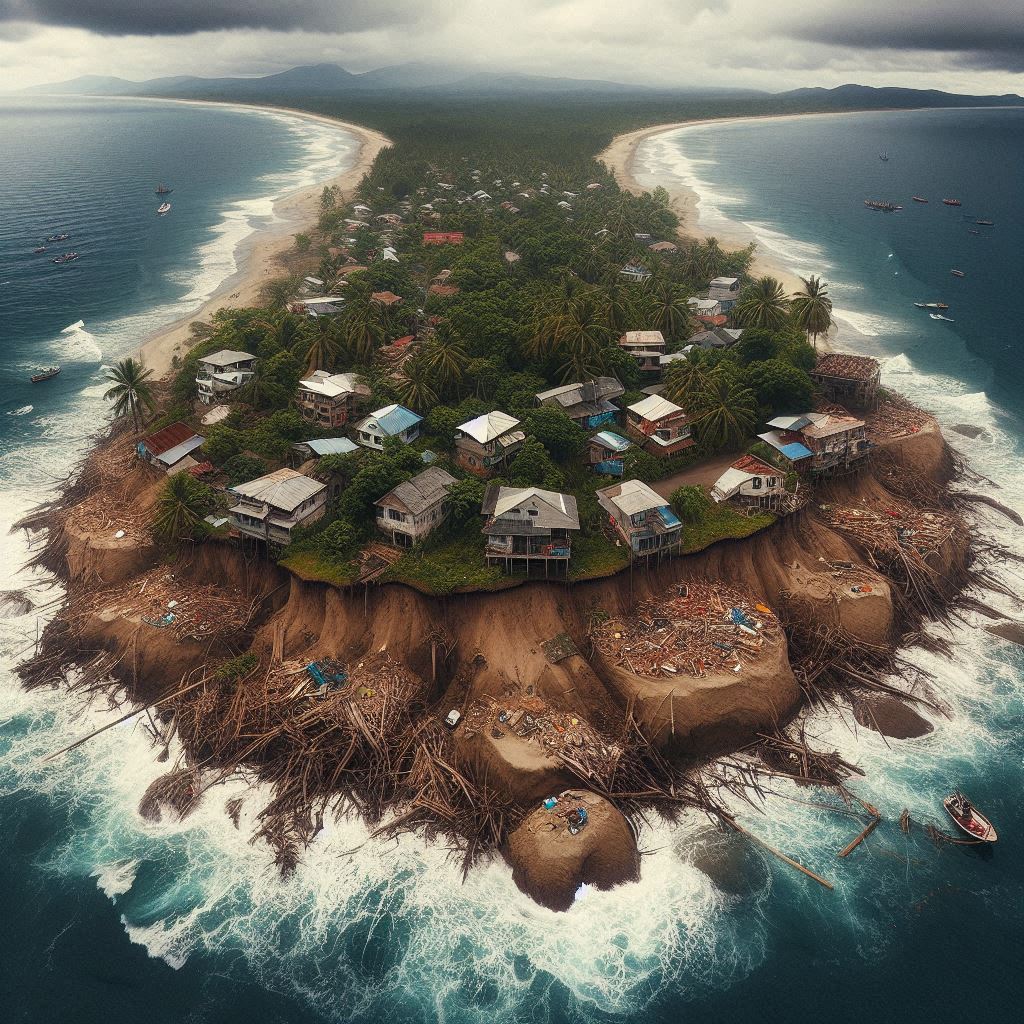Coastal erosion, that phenomenon that makes beaches disappear faster than ice cream in the sun! It is as if the sea has decided to restructure without asking permission, taking away a bit of land every day. But it is not all nature’s game; we humans have also put our hand in, building here and there without thinking too much about the consequences.
- Climate change and coastal erosion
- Coastal erosion forecasting and monitoring
- How to mitigate coastal erosion?
Climate change and coastal erosion
Coastal erosion is influenced by several natural factors, mainly wave action, sea currents and weather events.
The waves of the sea, generated by winds and storms, exert a continuous force on the beaches and cliffs, slowly eroding the land masses.
Sea currents, which move both horizontally and vertically, transport sediment and contribute to coastal soil loss.
In addition, extreme weather phenomenasuch as hurricanes, tropical storms and floods can significantly accelerate erosion, causing immediate and substantial damage.
Climate change further aggravates the situation, leading to rising sea levels and an increase in the frequency and intensity of extreme weather events; natural barriers that protect land from the sea, such as sand dunes and cliffs, are eroded, increasing the vulnerability of inland areas.
This process is accelerated by human factors, such as the construction of dams on rivers, the extraction of sand from river beds near the coasts, and the extraction of water from the subsoil leading to coastal subsidence, and the intrusion of the salt wedge.
Coastal erosion forecasting and monitoring
Coastal erosion prediction models are becoming increasingly advanced through the use of modern technologies such as satellite data and computer simulations.
In the United States, the National Oceanic and Atmospheric Administration (NOAA) has revealed that about 40% of the coastline is currently subject to erosion. In some areas, erosion rates vary from 1% to 5% per year, highlighting how widespread and problematic the phenomenon is. Globally, sea levels have risen by about 3.3 millimetres per year over the past 25 years.
If current warming trends continue, projections indicate that sea levels could rise between 0.3 and 1.2 metres by the end of the century.
This change would have dramatic consequences: according to a report by the World Resources Institute, without appropriate action, more than 280 million people could find themselves living below sea level by the same date.
Satellite data analysis and field studies are key tools for monitoring and understanding erosion trends in different regions. These methods provide valuable information on the speed and extent of erosion, enabling the identification of areas most at risk and the planning of appropriate interventions.
How to mitigate coastal erosion?
Coastal defence can be achieved through various direct interventions:
- Reduction of wave run-up and overflow: construction of breakwaters or dikes to dissipate wave energy and reduce erosion
- Supporting the groundbehind: reinforcing the ground with retaining walls or piles to prevent landslides
- Wave erosion protection: installation of artificial reefs or stone revetments to absorb wave energy
- Artificial sand replenishment: addition of sand to the beach to compensate for the loss of sediment and maintain its width.
These interventions are often combined and integrated with natural engineering measures, such as the restoration of mangroves and the creation of artificial reefs.
However, coastal defence works can have several disadvantages:
- The alteration of littoral transport, the natural process of sediment movement along the coast, aggravating erosion in other stretches of coastline
- They can hinder the free propagation of waves, altering natural wave dynamics and damaging local marine ecosystems
- Visual impact with alteration of coastal morphology and landscape appearance
- Destruction of natural habitats, such as dunes and wetlands, essential for biodiversity and coastal protection
- Significant economic investment, both for initial implementation and maintenance over time.
With collective effort and the right balance, we can develop sustainable strategies to preserve our precious coastlines, thereby protecting biodiversity and supporting the communities that depend on these unique environments.
Play for the planet!
